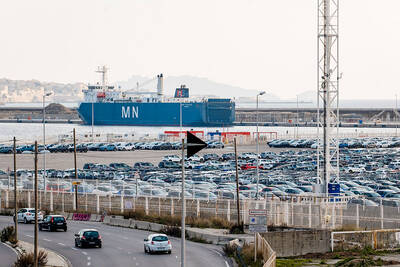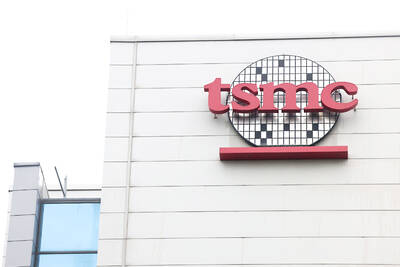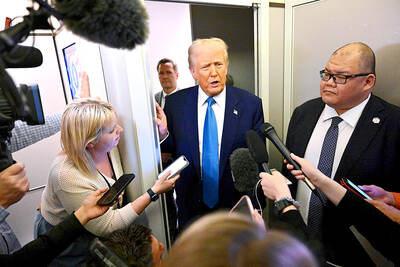Renewable Energy Corp, the Norwegian maker of solar-energy components, will invest almost 13 billion kroner (US$2.5 billion) to increase production of wafers, cells and modules at a plant in Singapore.
The investment will be financed through a 10 billion-kroner loan and cash, and the expansion is expected to generate as much as 11 billion kroner in revenue in 2012, the Hoevik, Norway-based company known as REC said in a statement yesterday. Production will begin in 2010 and reach 740 megawatts of wafers, 550 megawatts of solar cells and 590 megawatts of modules by 2012.
“The project is fully financed and as such we can take away any speculation of REC raising any additional equity,” chief executive officer Erik Thorsen said during a Web cast to investors. “Over the next few years, REC will show decent growth in all areas.”
Demand for alternative energy sources such as solar and wind is increasing amid efforts to curb emissions of carbon dioxide, a gas blamed for global warming. Intel Corp, the world’s largest chipmaker, announced on Tuesday it would spin off its solar technology business and create a company called SpectraWatt Inc, saying demand will grow by as much as 40 percent annually.
SpectraWatt will open a plant in Oregon in the second half that will make photovoltaic cells and develop ways to cut the cost of solar technology, Intel said in a statement. Shipments will probably start in the middle of next year, Intel said.
REC said the investment is the first of “several planned development phases.” The company got a loan agreement worth 10 billion kroner to help cover the expansion. ABN Amro, BNP Paribas, DNB NOR ASA, Nordea Bank AB and SEB AB were the underwriters.
The announcement is about half of the 3 billion euros (US$4.66 billion) the company expects to spend in Singapore to reach an estimated capacity of 1.5 gigawatts, Evensen said.
“The announcement was long-awaited,” he said. The company had said it would make an announcement related to its investment in Singapore sometime in the second quarter.
“Volumes were a little higher than expected,” Evensen said.
Based on the expansion, REC should be producing about 2,400 megawatts of wafers, 780 wafers of cells and 740 megawatts of modules in 2012, CEO Thorsen said.
“There is still significant space for further expansion at this site,” he told investors. The investment decision for the next phase is expected next year.
REC, whose costs for producing cells and modules are around the industry average, said it sees costs for cells made in Singapore at about 45 percent below the industry average and modules at about 35 percent less than the average.
The company will also invest up to 400 million kroner to upgrade production capacity at Heroya, Norway, by about 100 megawatts, the company said in a separate statement yesterday. Construction is expected to start toward the end of the third quarter and additional capacity will be added by the end of next year, it said.

When an apartment comes up for rent in Germany’s big cities, hundreds of prospective tenants often queue down the street to view it, but the acute shortage of affordable housing is getting scant attention ahead of today’s snap general election. “Housing is one of the main problems for people, but nobody talks about it, nobody takes it seriously,” said Andreas Ibel, president of Build Europe, an association representing housing developers. Migration and the sluggish economy top the list of voters’ concerns, but analysts say housing policy fails to break through as returns on investment take time to register, making the

‘SILVER LINING’: Although the news caused TSMC to fall on the local market, an analyst said that as tariffs are not set to go into effect until April, there is still time for negotiations US President Donald Trump on Tuesday said that he would likely impose tariffs on semiconductor, automobile and pharmaceutical imports of about 25 percent, with an announcement coming as soon as April 2 in a move that would represent a dramatic widening of the US leader’s trade war. “I probably will tell you that on April 2, but it’ll be in the neighborhood of 25 percent,” Trump told reporters at his Mar-a-Lago club when asked about his plan for auto tariffs. Asked about similar levies on pharmaceutical drugs and semiconductors, the president said that “it’ll be 25 percent and higher, and it’ll

NOT TO WORRY: Some people are concerned funds might continue moving out of the country, but the central bank said financial account outflows are not unusual in Taiwan Taiwan’s outbound investments hit a new high last year due to investments made by contract chipmaker Taiwan Semiconductor Manufacturing Co (TSMC, 台積電) and other major manufacturers to boost global expansion, the central bank said on Thursday. The net increase in outbound investments last year reached a record US$21.05 billion, while the net increase in outbound investments by Taiwanese residents reached a record US$31.98 billion, central bank data showed. Chen Fei-wen (陳斐紋), deputy director of the central bank’s Department of Economic Research, said the increase was largely due to TSMC’s efforts to expand production in the US and Japan. Investments by Vanguard International

WARNING SHOT: The US president has threatened to impose 25 percent tariffs on all imported vehicles, and similar or higher duties on pharmaceuticals and semiconductors US President Donald Trump on Wednesday suggested that a trade deal with China was “possible” — a key target in the US leader’s tariffs policy. The US in 2020 had already agreed to “a great trade deal with China” and a new deal was “possible,” Trump said. Trump said he expected Chinese President Xi Jinping (習近平) to visit the US, without giving a timeline for his trip. Trump also said that he was talking to China about TikTok, as the US seeks to broker a sale of the popular app owned by Chinese firm ByteDance Ltd (字節跳動). Trump last week said that he had